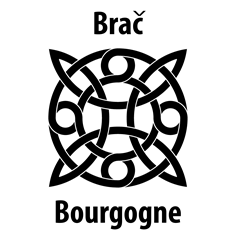Brabourgstone project
About the project
The project “Story of the stone, Brac-Bourgogne” is implemented through an international partnership between 4 schools from different subsystems of education in Croatia and France. Osnovna (Elementary) škola Pučišća (island Brač) was the coordinator of the project, and Collège A. Malraux (Dijon), Lycée Les Marcs d’Or (Dijon), Masonry School Pučišća (Secondary) – project partners.
The set goals followed in the project course:
- increase teacher’s competencies in innovative teaching process (project and research learning),
- increase students’ motivation in learning and educational outcomes through innovative teaching.
Project participants connected around the common project theme: stone in the culture and architecture of medieval Brač and Burgundy. The selected theme is included in the school curriculum of each of the above-mentioned schools, and is approached through cross-curricular methods in different classrooms.
While exploring the theme, the teachers and participants in the project built collaborative teams and tested vast possibilities of holistic approach in teaching through joint work and mutual exchange of experiences.
The results obtained from the project implementation are the results of a multidisciplinary approach which required knowledge (tools) in different educational fields, and were materialized and publicly presented in the course of the project and upon its completion.
From each school, one class was selected to work on the project theme: “Acquiring general knowledge of the early Middle Ages in the homeland through the existing stone monuments.” Due to different students’ grade levels (two classes being students from 11 to 14 years of age – lower secondary school, and two classes from 15 to 18 years – secondary vocational school), each teaching team selected a class according to personal preferences, thus proving that proper methodology gives results at all education levels.
The teaching teams held meetings in their respective schools on regular basis, planning the teaching-learning process, discussing the students’ knowledge and skills needed in each phase of the project, within their field of work. The students were given the necessary tools required for their research activities and information processing. The creative enthusiasm and motivation of the participants strongly contributed to the excellent project results.
Teaching process develops through the following stages:
- fact research and data collection (in reality or literature)
- processing of collected information (in the classroom)
- connecting new information with previous knowledge (in the classroom)
- systematization and presentation of acquired knowledge by various means of expression: word, image, graphs, three-dimensional models, photography, multimedia
- practical application of acquired knowledge in Problem tasks from different teaching areas
COGNITIVE PROCESS AND METHODOLOGICAL PROCEDURES IN RESEARCH LEARNING
PARTS OF THE LEARNING PROCESS | ENCOURAGING QUESTIONS |
1. Noticing the phenomenon | What did you notice? How do you interpret that? Why? |
2. Collecting necessary data | What can’t you explain? What information are missing? Where can you find them? |
3. Information processing | What does this remind you of? What are the similarities and differences? What is most important? What can you connect it to? If this and that happens, what will happen next? |
4. Drawing conclusions | What can you conclude from all the data? How can you check if the conclusion is valid |
5. Presenting solutions as per personal mental picture | How could you show and convey this to others (picture, word, graph, combination of picture and word, numerical representation, model…)? |
6. Practical use of acquired knowledge | Where could you benefit from what you have just learned? |
Summary of conclusions of achieved project results
- Positive changes have been introduced in everyday educational practice that may initiate changes in the education systems in partner countries:
- educational process is more dynamic
- emotions being part in the educational process
- educational contents are related to situations and problems based on real life situations?
- Increased student motivation to learn
- Students have become aware of the purposefulness of education
- Student knowledge is permanent and applicable in everyday life
- Students’ key competencies have been increased
- Each student has attained self-realization and expressed his peculiarities, depending on the dominant type of intelligence.
The quality of work of all partners in the project can be seen in the final joint product, this being a cultural handbook “Brač-Bourgogne: The Story about Stone” in which the results of all the students’ research in the project topic are combined and harmonized. The handbook has been printed and published on the Web, and will serve the current and future students of the partner schools and countries as a history textbook. It will enable them to have a better understanding of their homeland in a European historical context.
More about the project on the website http://www.bracbourgogne.com.hr/

